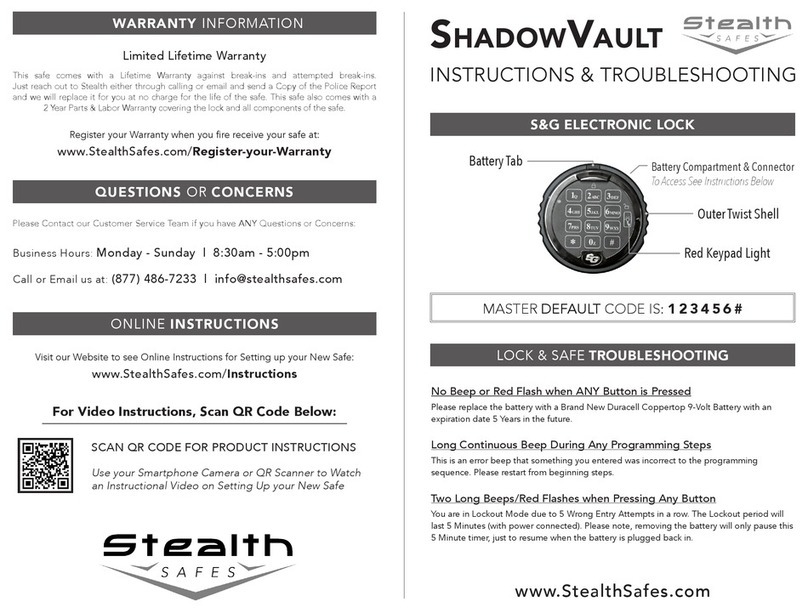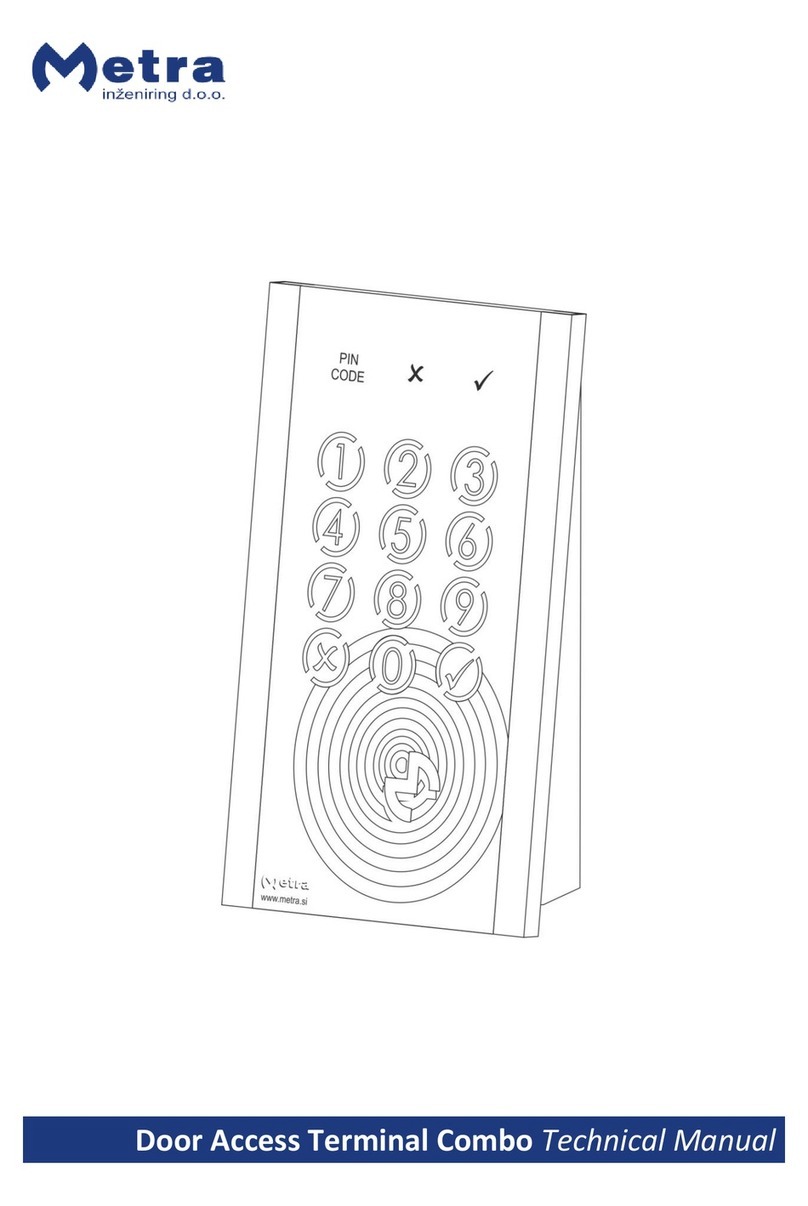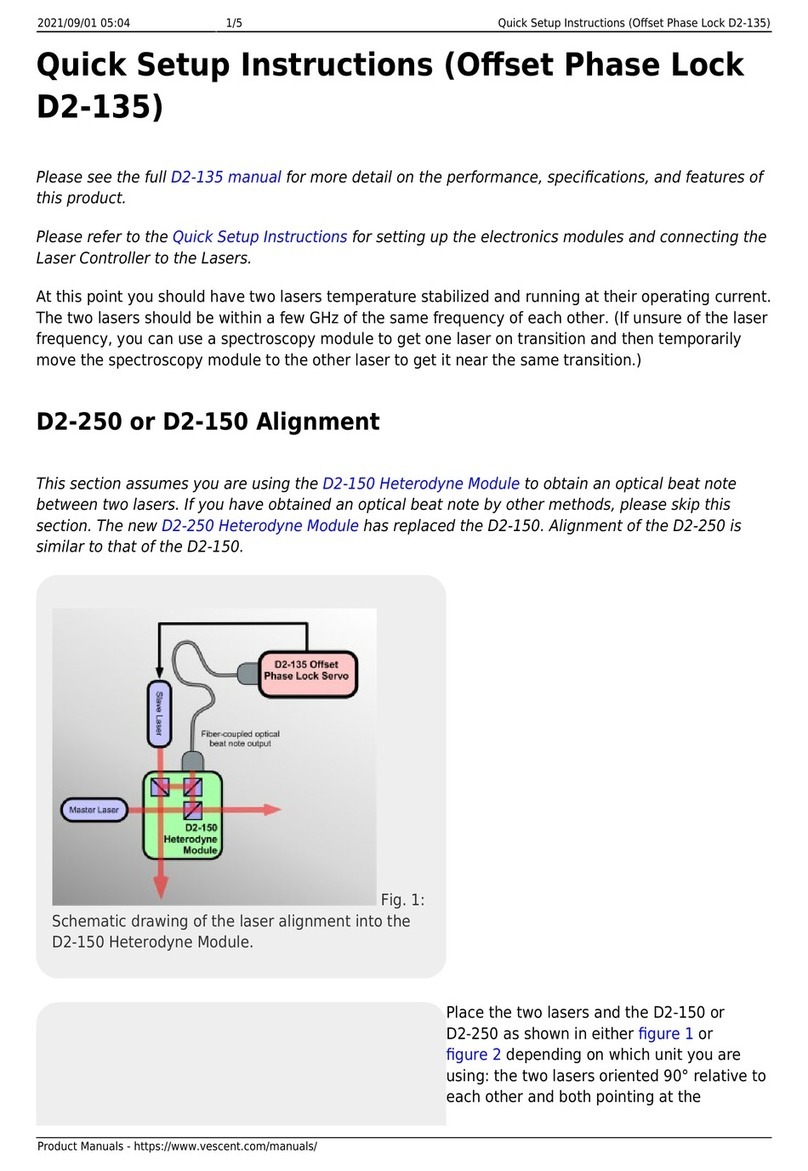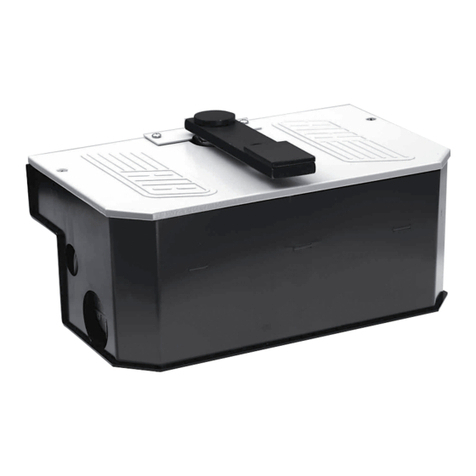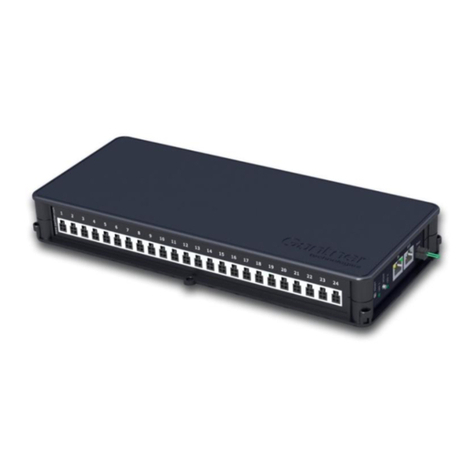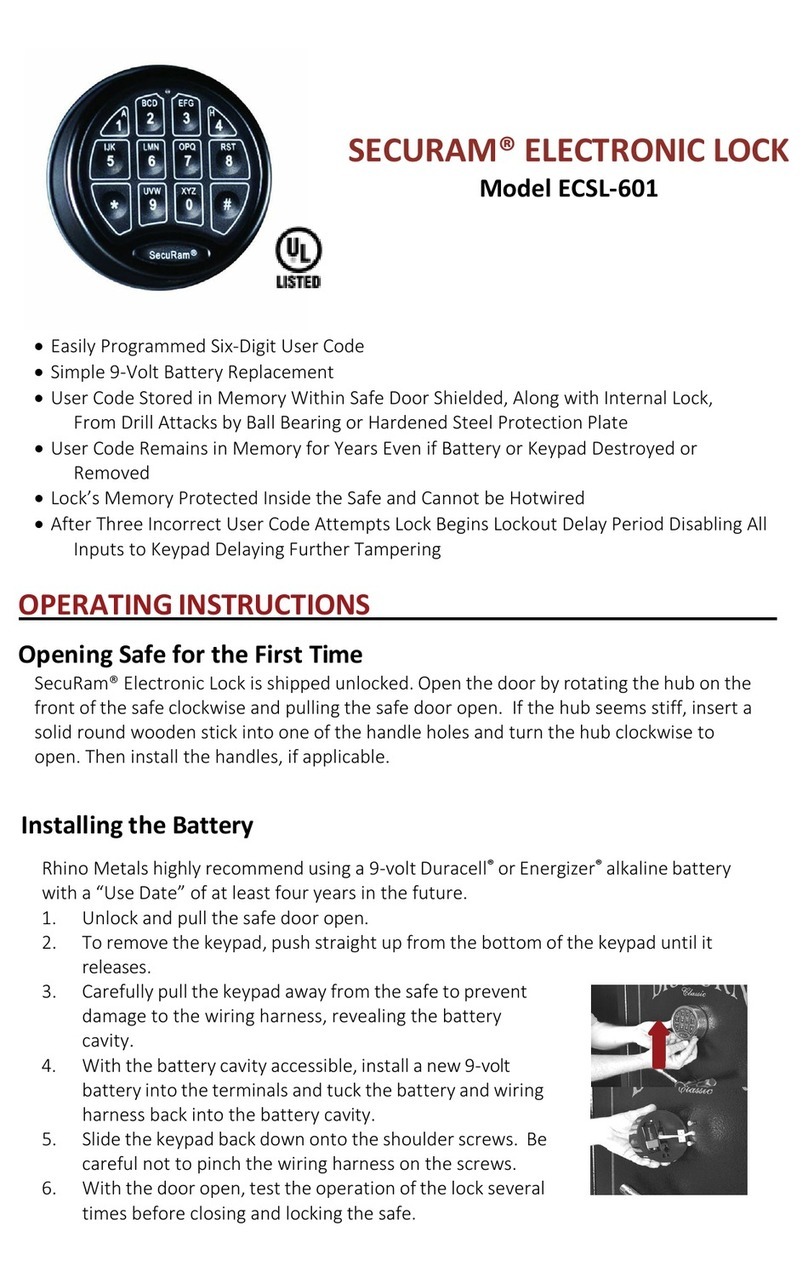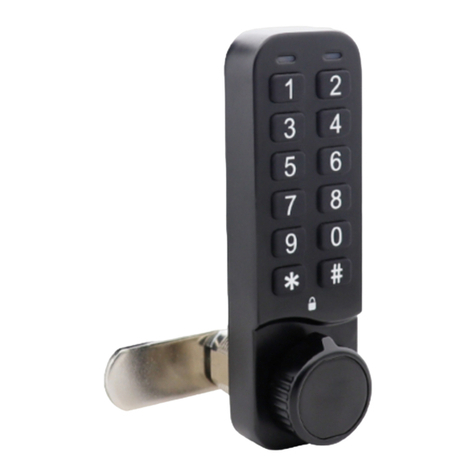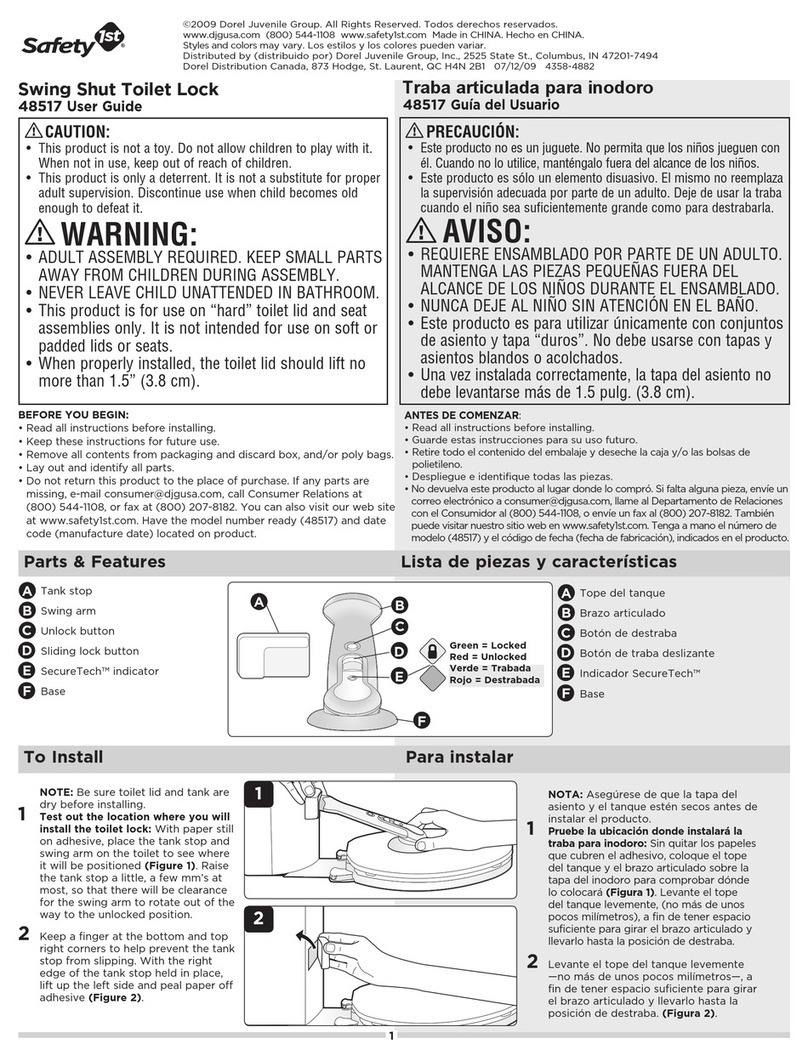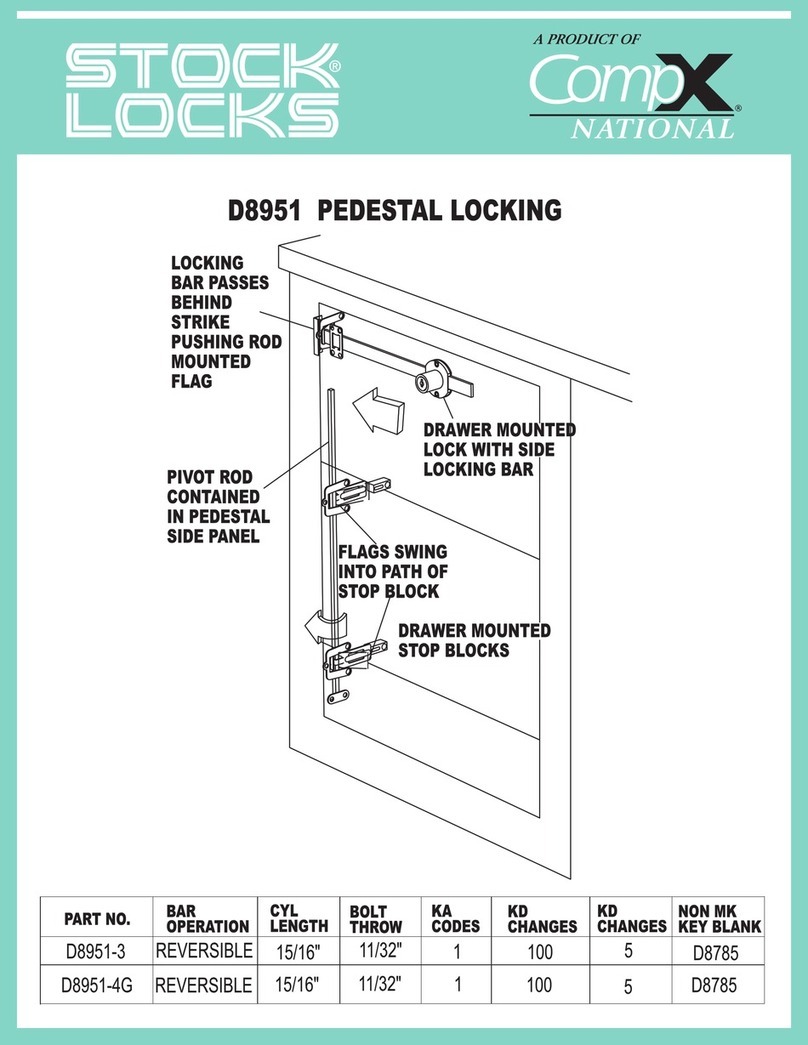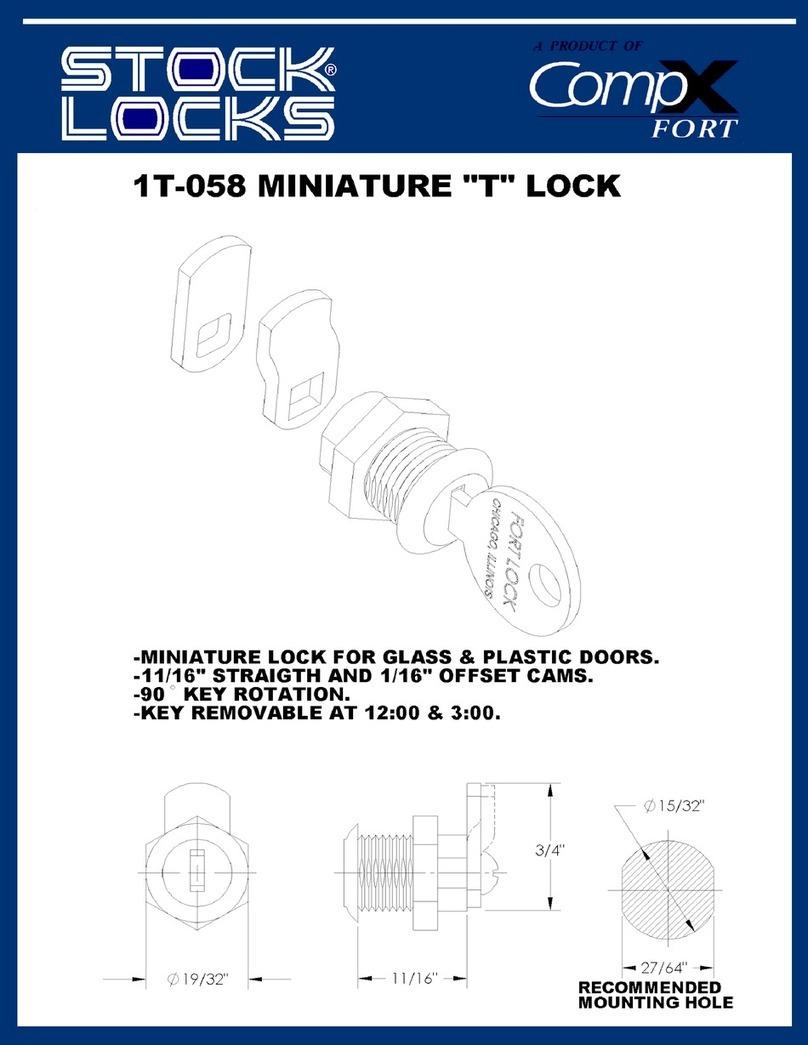
2022/03/09 21:11 3/4 Quick Setup Instructions (Offset Phase Lock D2-135)
Product Manuals - https://www.vescent.com/manuals/
D2-135 Locking
Getting a phase lock can be tricky, as the servo feedback must be pretty well optimized to your laser
to get a phase lock. The narrower the linewidth of the laser and the higher the bandwidth of the laser,
the easier it is to get a phase lock. The first step is to get an error signal with a steep slope at the
desired offset frequency and then a basic lock.
Connect the D2-135's Servo Out to the Servo In on your Laser Controller to sweep the slave laser's
frequency. (Refer to figure 3 for making electrical connections to the D2-135.) Connect the Ramp TTL
on the D2-135 to the trigger on your O-scope and view the Error In Monitor to the O-scope. Set the
D2-135 to N=16, VCO Low mode, put the Servo in Ramp mode and by tweaking the laser current, you
should see the Error In Monitor look something like what is shown in figure 4.
Fig. 4:
Sample
Error
Signal
when
sweepi
ng one
laser.
Reflecti
on
point
shown
in blue,
two
lock point shown in red.
The reflection point on the
Error Signal is where the two
lasers are at the same
frequency. The Error Signal is
a even function of offset
frequency (Error(Δf) = Error(-
Δf)), so there is a reflection
point about Δf=0. The sharp
slope to the left or right of the
Δf=0 point is the lock point
and can be adjusted by
changing the VCO frequency.
Which of the two lock points
the laser will lock to will
depend on the gain sign.
Center the O-scope on one of
the lock points and turn down
the ramp amplitude. Flip the
D2-135 Servo to Lock mode. If
the Servo Output jumps to
+/-10V, repeat with the
opposite gain sign. At this
point, you should have a lock
that is holding the offset
frequency to a specific value.
You may be be significantly
broadening the laser because
the servo is oscillating, but
you have a basic lock.
Optimizing the Lock
The first step is to optimize the gain.
Look at the Error In Monitor and turn
down the gain to minimize the RMS
noise on the Error In Monitor. At this
point you should be able to see the

